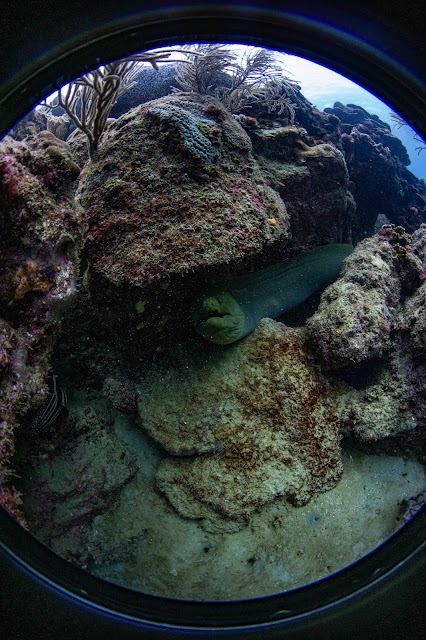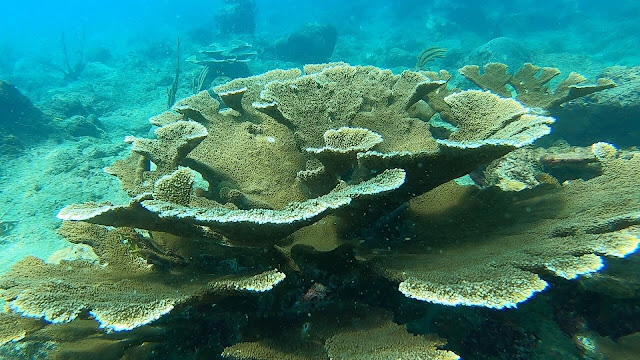Taking Care of Forests and the Deep Sea
Keep an ear open for the latest science, Dr Anjani Ganase encourages us to pay attention to what’s happening in the world. The entire planet is our responsibility, from the forests to the deepest parts of the ocean. Do what you can to reduce plastic pollution, keep your backyard green and the ocean clean.
Plant a tree
While planting trees is important to offset climate change, researchers at the University of California have found that trees planted in the tropics have the most effective impact on climate mitigation compared to those planted in temperate regions. In the tropics, there are two main aspects to cooling the planet. First, trees sequester carbon dioxide, pulling the carbon dioxide from the atmosphere during photosynthesis. Second, tropical forests effect physical cooling by releasing cool water vapour which results in higher humidity and cloud formation. Forests also emit organic aerosols, and these aerosols and the clouds reduce heat radiation on the earth’s surface. Planting trees in the temperate zones may produce a slightly warming effect, but there is still a net benefit from global reforestation activities, especially in areas where forests previously occurred. So go ahead and plant a tree. If every TT citizen plants one tree in their life time, we would have over a million trees working to keeping our islands and planet cool.

Northern range forest of
Trinidad. Photo courtesy Anjani Ganase
Sea-level rise since 1990s
The advent of satellites has allowed humans to track and monitor the rate of sea-level rise over the last 30 years. Since the 1990s, global sea-level has risen on average 10 – 11 cm or 4 inches. It may appear to be a small change but can be catastrophic for coastal communities and islands populated at sea level, especially during large tidal changes or storm surges that push seawater much farther inland. The impacts of sea-level rise will vary significantly from place to place. The acceleration of sea-level rise has doubled in speed from 2.1 mm/year in the early 1990s to about 4.5 mm/year in recent times. This rate of sea-level rise experienced over the last 30 years, is the fastest experienced in 3,000 years. Climate change also results in the thermal expansion of seawater, as it absorbs heat and the melting of ice caps. Remarkably, scientists in the 1990s modelled projections for sea level rise in the 1990s without presence of satellite data, limited computing and modelling power and managed to successfully model with high accuracy. Scientists compared the satellite data to the model published in the 1995/ 1996 IPCC Assessment Report and found the projections were closely aligned to global observations. This is reassuring for building preparedness into the future, as the projections go to 2100 and now have been updated with the satellite data. However, at the regional or country scales, local information must still be considered in projections of sea-level rise.

‘Casper’ octopus. Image courtesy
of NOAA Ocean Exploration, 2016 Hohonu Moana.
Deep sea mining threatens marine mammals
The Clarion Clipper Zone (CCZ) is a six million square-kilometre abyssal plain (as wide as the USA) located in the Eastern Pacific between Hawaii and Mexico. This Zone is known for its abundance of rare earth metals – nickel, copper and manganese - present in nodules on the seafloor; and is targeted for deep-sea mining. The process of this mining would be to scrape the ocean floor to collect the nodules and pump them to the surface. The CCZ is an area of undiscovered deep-sea ecosystems only recently being explored, and which may be destroyed, raising grave environmental concerns. Scientists exploring the CCZ, recently discovered a new species of octopus that lays its eggs on sponge stalks anchored to the manganese nodules. There is much more deep-sea marine life yet to be discovered in this vast area.
Marine scientist Dr Kristen Young and others from the University of Exeter explored two areas in the CCZ designated for mining, using acoustic technology to listen for marine mammals. In the 13 days of surveying along a 4000+ km track they heard and saw about 30 species of marine mammals, mostly composed of dolphin species and toothed whales. Of the whales observed the sperm whales are considered to be an IUCN red listed vulnerable species. Deep-sea mining is likely to destroy seafloor ecosystems and emit large sediment plumes into the surrounding water column. Another impact would be the ambient noise of the mining operations on species that communicate mainly by sound, such as sperm whale populations, especially at depths where the sounds can penetrate over 500 km.

Illustration of Janjucetus
dullard, an ancient marine mammal. Image credit: Ruairidh Duncan.
Ancient marine mammal
This year, Australian scientists have identified another ancient marine mammalian predator of the seas from fossils discovered along Victoria’s coastline, south-east Australia. The ancient whale, called Janjucetus dullardis, can grow up to two meters in length - essentially the size of a modern-day dolphin. The fossil constituted the skull, ear bone and teeth from a juvenile specimen. It had large eyes and razor-sharp teeth. Analysis also revealed that this was an ancient cousin to modern-day baleen whales which are much larger, and have adapted teeth to baleen for straining krill.
References
Duncan, Ruairidh J., et al. "An immature toothed mysticete from the Oligocene of Australia and insights into mammalodontid (Cetacea: Mysticeti) morphology, systematics, and ontogeny." Zoological Journal of the Linnean Society 204.4 (2025): zlaf090.
Hamlington, B.D., Bellas-Manley, A., Willis, J.K. et al. The rate of global sea level rise doubled during the past three decades. Commun Earth Environ 5, 601 (2024). https://doi.org/10.1038/s43247-024-01761-5
Törnqvist, T. E., Conrad, C. P., Dangendorf, S., & Hamlington, B. D. (2025). Evaluating IPCC projections of global sea-level change from the pre-satellite era. Earth's Future, 13, e2025EF006533. https://doi.org/10.1029/2025EF006533
Young KF, Webber T, Karantzas L, Miteva S, Oakes G, Santillo D and Johnston P (2025). Threatened cetaceans in a potential deep seabed mining region, Clarion Clipperton Zone, Eastern Pacific, August 2023. Front. Mar. Sci. 12:1511075. doi: 10.3389/fmars.2025.1511075
Sockman, Keith W. 2025. “ Long-Term Decline in Montane Insects under Warming Summers.” Ecology 106(9): e70187. https://doi.org/10.1002/ecy.70187
A fact sheet from PEW Charitable Trust on the Clarion-Clipper Zone, Dec 2017.


